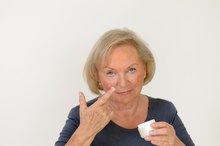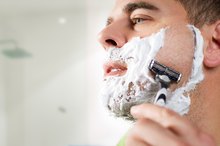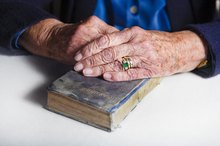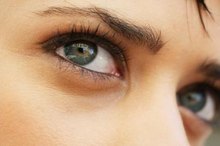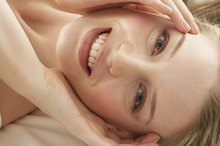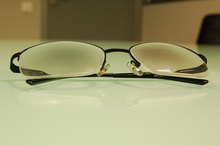What does fact checked mean?
At Healthfully, we strive to deliver objective content that is accurate and up-to-date. Our team periodically reviews articles in order to ensure content quality. The sources cited below consist of evidence from peer-reviewed journals, prominent medical organizations, academic associations, and government data.
The information contained on this site is for informational purposes only, and should not be used as a substitute for the advice of a professional health care provider. Please check with the appropriate physician regarding health questions and concerns. Although we strive to deliver accurate and up-to-date information, no guarantee to that effect is made.
Hydrogen Peroxide for Age Spots
The aging process has advantages and disadvantages, and many people would agree that age spots definitely fall into the latter category. They are there for all the world to see and a beacon that middle age has parked itself on your skin. Fortunately, age spots can be treated and eliminated.
Expensive lasers, chemical peels and freezing by liquid nitrogen are all options, but you may already have an inexpensive way to erase them yourself, at home. Hydrogen peroxide may be the key to turning back the years 1.
Features
Age spots, or lentigines, are usually evidence of your sun exposure through the years. Medline Plus of the National Library of Medicine, reports that age spots are common after the age of 40 2. You may have heard heard them referred to as "liver spots," but they have no connection to your liver or its function 2.
David G. Williams, M.D., owner of an alternative medical clinic in Texas and researcher, identifies hydrogen peroxide as "an interesting substance that should really be called hydrogen dioxide. Its chemical formula is H2O2. It contains one more atom of oxygen that does water--H20."
It is colorless and odorless, but not tasteless. It can be dangerous if ingested.
- Age spots, or lentigines, are usually evidence of your sun exposure through the years.
- David G. Williams, M.D., owner of an alternative medical clinic in Texas and researcher, identifies hydrogen peroxide as "an interesting substance that should really be called hydrogen dioxide.
Expert Insight
Differences between Malignant Melanoma and a Normal Mole
Learn More
New York dermatologist, Dr. Karen Burke, recommends using hydrogen peroxide on small age spots for an inexpensive, over-the-counter treatment. This is not a quick fix, as it could take up to several weeks to get rid of the age spot you target.
Dr. Burke advises using 12 percent hydrogen peroxide, typically found at beauty supply stores. It is often used in combination with products to bleach your hair. By contrast, the hydrogen peroxide you may have in your home as a disinfectant is most likely only 3 percent.
- New York dermatologist, Dr. Karen Burke, recommends using hydrogen peroxide on small age spots for an inexpensive, over-the-counter treatment.
- By contrast, the hydrogen peroxide you may have in your home as a disinfectant is most likely only 3 percent.
Identification
Before applying the hydrogen peroxide, distinguish your age spots from other brown marks on your skin. Age spots are flat, light to dark brown or black areas that result from increased pigmentation, and their edges are rarely uniform in appearance. As you begin to set up for this home treatment, be sure to guard against any spilling of the peroxide. At the recommended 12 percent, it could damage any colored surface it touches. Expect the typical foaming seen when hydrogen peroxide makes contact with a surface; this is merely an interaction with oxygen.
- Before applying the hydrogen peroxide, distinguish your age spots from other brown marks on your skin.
- At the recommended 12 percent, it could damage any colored surface it touches.
Instructions
How to Get Rid of Hereditary Dark Eye Circles
Learn More
Dr. Burke recommends using a cotton swab, dipped in the peroxide. First apply it to one small spot to see how your skin reacts.
If this is well tolerated, then re-apply it on your age spots, pushing in slightly with the swab. Be careful to place the peroxide solution only on the spot itself and do not let it drip down onto your face. This typically happens when you have absorbed too much liquid on the tip of the cotton swab.
Hold the swab in place until slight stinging is felt. Repeat this once every three days for several weeks.
- Dr. Burke recommends using a cotton swab, dipped in the peroxide.
- First apply it to one small spot to see how your skin reacts.
Time Frame
After you have applied the hydrogen peroxide to your age spots, you may feel a slight burning sensation for up to 10 minutes. This is normal and no cause for concern. Spots may appear white for up to four hours.
**After the white begins to fade, the spots may become pink or red for a few days.
** After several days, expect the spot to scab over for a few more days and then it should fall off on its own. Do not pick these scabs off prematurely or you will not see the full effect.
- After you have applied the hydrogen peroxide to your age spots, you may feel a slight burning sensation for up to 10 minutes.
Related Articles
References
- Educate Yourself : The Many Benefits of Hydrogen Peroxide
- Medline Plus: Liver Spots
- American Academy of Dermatology. Variety of Options Available to Treat Pigmentation Problems. February 5, 2013. https://www.aad.org/media/news-releases/variety-of-options-available-to-treat-pigmentation-problems
- Tomecki J, Woodhouse G. Common Benign Growths. Cleveland Clinic Center for Continuing Education. http://www.clevelandclinicmeded.com/medicalpubs/diseasemanagement/dermatology/common-benign-growths/
- Scarcella G, Dethlefsen MW, Nielsen MCE. Treatment of solar lentigines using a combination of picosecond laser and biophotonic treatment. Clin Case Rep. 2018;6(9):1868-1870. doi:10.1002/ccr3.1749
- Scherer D, Kumar R. Genetics of pigmentation in skin cancer--a review. Mutat Res. 2010;705(2):141-53. doi:10.1016/j.mrrev.2010.06.002
- Bastiaens M, Hoefnagel J, Westendorp R, Vermeer BJ, Bouwes bavinck JN. Solar lentigines are strongly related to sun exposure in contrast to ephelides. Pigment Cell Res. 2004;17(3):225-9. doi:10.1111/j.1600-0749.2004.00131.x
- Davis EC, Callender VD. Postinflammatory hyperpigmentation: a review of the epidemiology, clinical features, and treatment options in skin of color. J Clin Aesthet Dermatol. 2010;3(7):20-31.
- George AO, Shittu OB, Enwerem E, Wachtel M, Kuti O. The incidence of lower mid-trunk hyperpigmentation (linea nigra) is affected by sex hormone levels. J Natl Med Assoc. 2005;97(5):685-8.
- Al-saif FM, Baqays AA, Alsaif HF, Alhumidi AA. Erythromelanosis follicularis faciei et colli with reticulated hyperpigmentation of the extremities. Clin Case Rep. 2017;5(10):1576-1579. doi:10.1002/ccr3.1095
- Dereure O. Drug-induced skin pigmentation. Epidemiology, diagnosis and treatment. Am J Clin Dermatol. 2001;2(4):253-62. doi:10.2165/00128071-200102040-00006
- Ammoury A, Michaud S, Paul C, et al. Photodistribution of blue-gray hyperpigmentation after amiodarone treatment: molecular characterization of amiodarone in the skin. Arch Dermatol. 2008;144(1):92-6. doi:10.1001/archdermatol.2007.25
- Jain A, Gupta N. Multifocal Bullous Fixed Drug Erruption Due To Phenytoin: A Lesson Learned! J Clin Diagn Res. 2015;9(12):OD04-5. doi:10.7860/JCDR/2015/15464.6908
- Mccarty M, Rosso JQ. Chronic administration of oral trimethoprim-sulfamethoxazole for acne vulgaris. J Clin Aesthet Dermatol. 2011;4(8):58-66.
- Massinde A, Ntubika S, Magoma M. Extensive hyperpigmentation during pregnancy: a case report. J Med Case Rep. 2011;5:464. doi:10.1186/1752-1947-5-464
- Sarkar SB, Sarkar S, Ghosh S, Bandyopadhyay S. Addison's disease. Contemp Clin Dent. 2012;3(4):484-6. doi:10.4103/0976-237X.107450
- Lause M, Kamboj A, Fernandez faith E. Dermatologic manifestations of endocrine disorders. Transl Pediatr. 2017;6(4):300-312. doi:10.21037/tp.2017.09.08
- Enguita FJ, Leitão AL. Hydroquinone: environmental pollution, toxicity, and microbial answers. Biomed Res Int. 2013;2013:542168. doi:10.1155/2013/542168
- Arora P, Sarkar R, Garg VK, Arya L. Lasers for treatment of melasma and post-inflammatory hyperpigmentation. J Cutan Aesthet Surg. 2012;5(2):93-103. doi:10.4103/0974-2077.99436
- Prohaska J, Badri T. Cryotherapy. StatPearls Publishing. 2019.
- Schalka S. New data on hyperpigmentation disorders. J Eur Acad Dermatol Venereol. 2017;31 Suppl 5:18-21. doi:10.1111/jdv.14411
- American Academy of Dermatology. Variety of Options Available to Treat Pigmentation Problems. February 5, 2013.
- Tomecki J, Woodhouse G. Common Benign Growths. Cleveland Clinic Center for Continuing Education.
Writer Bio
Jean Jenkins has been writing professionally since 1994. She has written medical research materials for the American Parkinson's Association, the Colorado Neurological Institute and the Autism Society of America. Jenkins has specialized in neurology, labor and delivery, high-risk obstetrics and autism spectrum disorders. She holds a Bachelor of Science in nursing from the University of Colorado.

